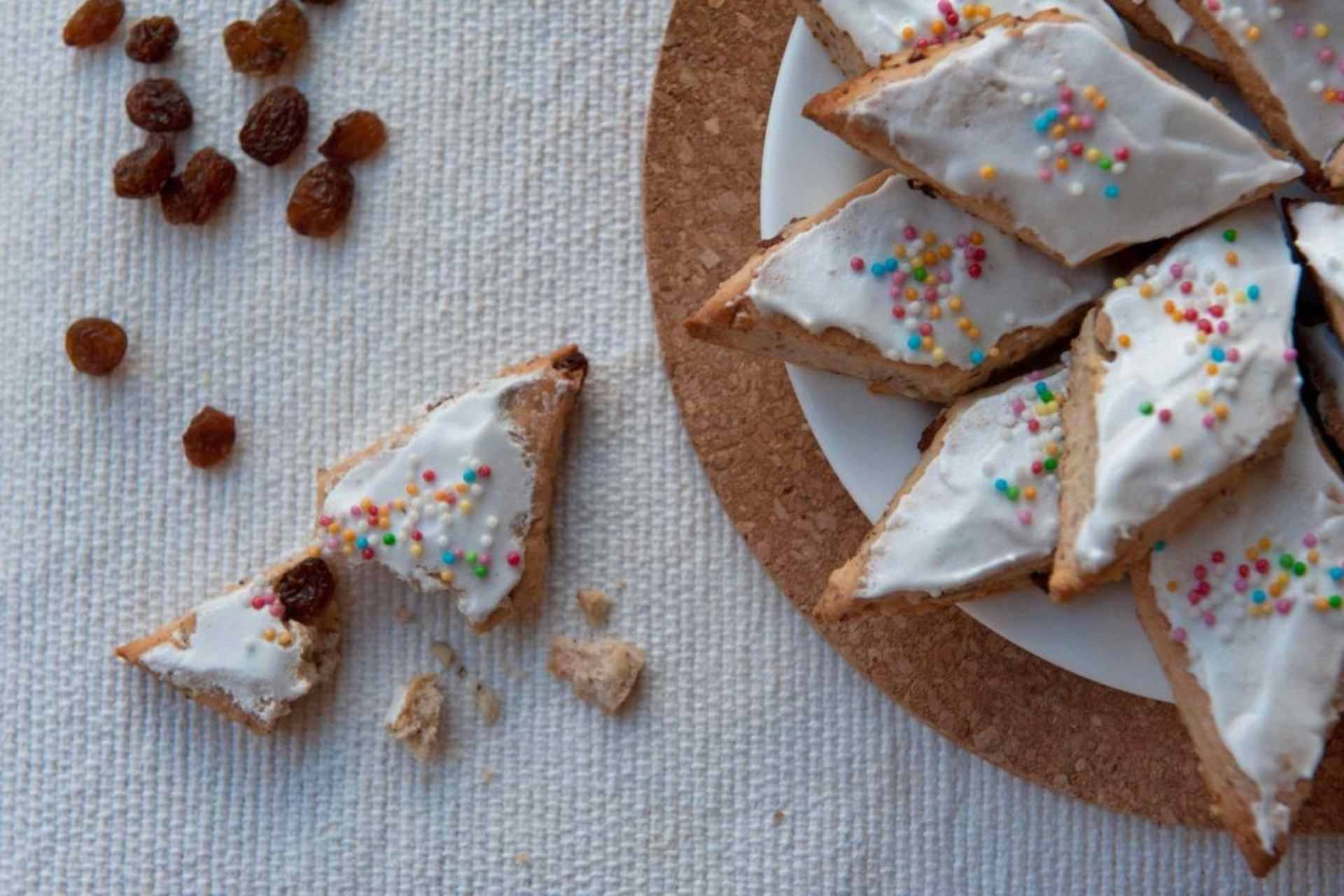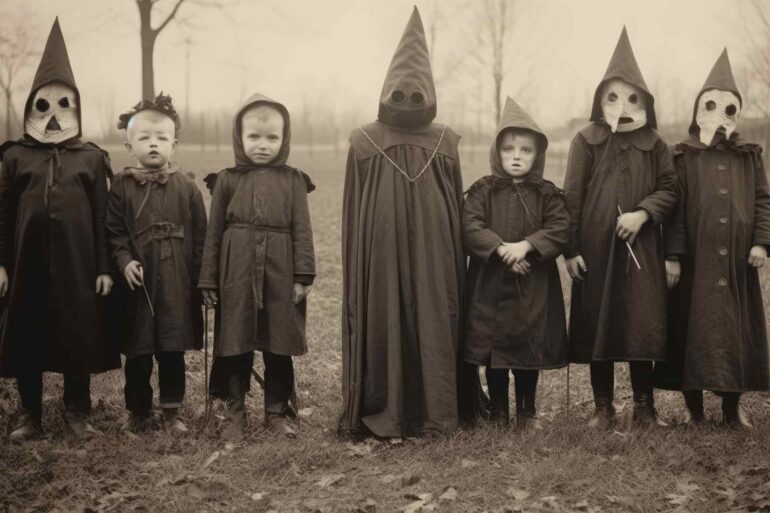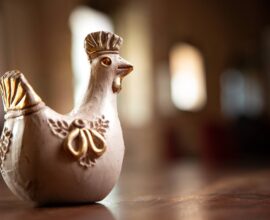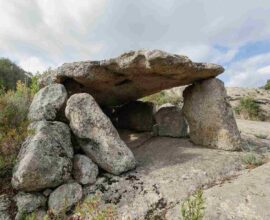Is Animeddas: legends, scents and tastes of Halloween night in South Sardinia
The “Night of Souls”, Is Animeddas, Sardinian Halloween between tradition e mysticism
A festival celebrating the cult of dead for millennia that doesn’t stop amaze adults and children with its magical atmospheres, ancient rituals and gluttonous sweets.
In Sardinia, a land rich in wonderful beaches and in ancestral traditions and rituals, the Halloween celebration takes on its own identity, deeply rooted in the local culture bringing ancient remnants of paganism, becoming Is Animeddas (also known as Su bene ‘e is animas in the north of the island, or Su mortu mortu in the southern area), the “night of souls”.
A celebration with uncertain and mysterious origins, which differs from part to part throughout the island and which roots back in remote times, but that has largely developed autonomously and prior to its much more famous Anglo-Saxon version.
Although today is common to see masked children wandering the streets asking for “trick or treat”, the “night of souls” never stops fascinate everyone with its fascinating legends and rituals, anciently bound to the cult of dead. Key elements in the local cultural heritage, a legacy of the pagan religion once prevalent in Sardinia, which have managed to survive the passage of time, evolving in harmony with the diffusion of Christianity first, and with all the foreign influences later, creating a unique fusion of sacred and profane, common in many other popular island celebrations, like Festival of Sant’Efisio and Corsa degli Scalzi di Cabras (Barefoot Run).
Due to its particular geographical position, isolated from the rest of the continent, the island’s territory has indeed always managed to preserve its own identity, at least partially, and remain immune from the Christianization that elsewhere led to total disappearance of ancient pagan cults and traditions, thus saving many elder traditions, in a unique syncretism, hard to find elsewhere.
Is Animeddas, a festival through history and myth
The origins of Is Animeddas date back to prehistoric age, when the agricultural and pastoral communities inhabiting the ancient island of Ichnusa used to celebrate the transition from the autumn season to winter with propitiatory rites, a symbolic representation of agriculture activities slowdown and the temporary “death” of nature.
In this cyclical context of life, death and rebirth, it was believed that souls of dead returned to Earth to keep in touch with the living and influence, for better or for worse, their events. In ancient Sardinian communities, closely linked to the rhythms of nature, the spirits of the ancestors were indeed perceived as constant and powerful entities, able to influence crops, livestock and daily life.
It was therefore important to honor and respect them, setting up feasts, lighting fires and candles to show them the way, and reciting prayers and magic formulas, all rites that had propitiatory functions, ensuring the favor of good souls and keeping away potential evil spirits.
As for the latter, the Sùrbiles, terrible vampire women who used to suck newborns blood, especially if still not baptized, the Panas, the souls of women who died in childbirth, who generally appeared in groups near streams and rivers, and the Janas, fairy beings with the appearance of small women who found home in pre-Nuragic tombs dug into the rock, the so-called “Domus de Janas”, who despite their usually good nature, could become vengeful with those who didn’t show respect to their incredible power.
But legends related to Halloween time don’t just tell of spirits and fairies, but also of people, such as the very rich Luxia Rabiosa, a wealthy landowner who, due to her extreme greed, was transformed by God into stone, along with all her possessions (according to popular tales, Luxia’s petrified objects are scattered throughout Sardinia).
In Campidano, the popular story tells of Maria Puntaoru, an ugly hungry woman who died dreaming of a plate of spaghetti: on the night between October 31 and November 1, her ghost, covered in rags and armed with a skewer, still terrorizes children who have had too many sweets or spaghetti without saving any for the dead. Such stories indeed reflect popular wisdom, mixed with a good dose of folklore and superstition.

Is Animeddas in Sardinia, the mutual traits with the Celtic Samhain festival
The spirit and rituals of Is Animeddas have much in common, after all, with those of the Anglo-Saxon festival Samhain, which was celebrated by Celtic between October 31 and November 1 in honor of the last harvest of the year, a moment that for elders represented an amazingly special event, a sort of portal between the worlds of the living and of the dead, in which the spirits could return.
So people lit bonfires and wore scary masks and disguises to confuse evil spirits and protect themselves from potential dangers, and left food for wandering souls to earn their benevolence. Rites aimed at protecting the community from supernatural dangers, but also at creating a symbolic bond with the dead’s souls, honoring them and acknowledging their presence on this special day, in which afterlife forces seem closer and more vivid.
With Christianity, many of these ancient pagan rituals and habits were gradually, though never completely, left behind: Samhain merged with the new celebrations, becoming All Hallows’ Eve, the eve of All Saints (in archaic English, “Hallow” meant saint or consecrated person). From this linguistic transformation originated the modern “Halloween”, the scariest and funniest festival of the year, today celebrated and loved throughout the world.
The sweets for Is Animeddas, a gluttonous Sardinian tradition
One of the most evocative traditions of Is Animeddas was the practice of leaving food and sweets for dead’s souls, who according to popular belief returned to visit their loved ones.
In many Sardinian homes, in the night between October 31 and November 1, tables were set with bread, wine and typical Halloween sweets such as su pabassinu (or papassini), delicious biscuits made with raisins and dried fruit, copulettas, a real delicacy made of toasted almonds, honey and sugar, su pane de s’ou, typical Sardinian semolina bread shaped like a small crown, enclosing a hard-boiled egg inside, and Ossus de Mortu (“dead’s bones”), sweets prepared with flour, sugar, butter, eggs and lemon zest, which owe their name to the resemblance to human bones, but also simpler foods such as roasted chestnuts or dried figs.
These offerings had a specific function: allow the souls to be nourished and, consequently, to bless the house. The practice of lighting candles on windowsills or in cemeteries was also part of the ritual, to illuminate the path of the souls and guide them back to their homes.
In some inland communities, were also set up actual banquets, where neighbors gathered to share food and tell stories about their deceased loved ones, in an atmosphere of respect and meditation. This shows Is Animeddas’s community dimension, as well as the spiritual one, that partly still has: the rites served to honor the dead, but also to strengthen social bonds within the village.
This sharing spirit was also manifested in the custom of children going from house to house reciting ancient formulas such as Mi das po is animeddas? (“Would you give me something for the souls?”), si onada a is animas? (“Do you give something for souls?”) or still, a fagher bene a sos mortos! (“Do good to the dead!”), collecting sweets and dried fruit for souls, a ritual that has been handed down to the present with analogies in modern Halloween’s “trick or treat”.
And although the global influence of the Anglo-Saxon festival has brought new traditions to Sardinia, the ancient festival of Is Animeddas continues to be celebrated in many towns in the areas of Barbagia, Campidano, and Oristano, where it’s still possible to see groups of children asking for offerings to gifts to the “animelle” (little souls) hanging between heaven and hell.
Do you want to discover the traditions of Sardinia and experience an unforgettable holiday in an authentic paradise? Discover Forte Village Resort






